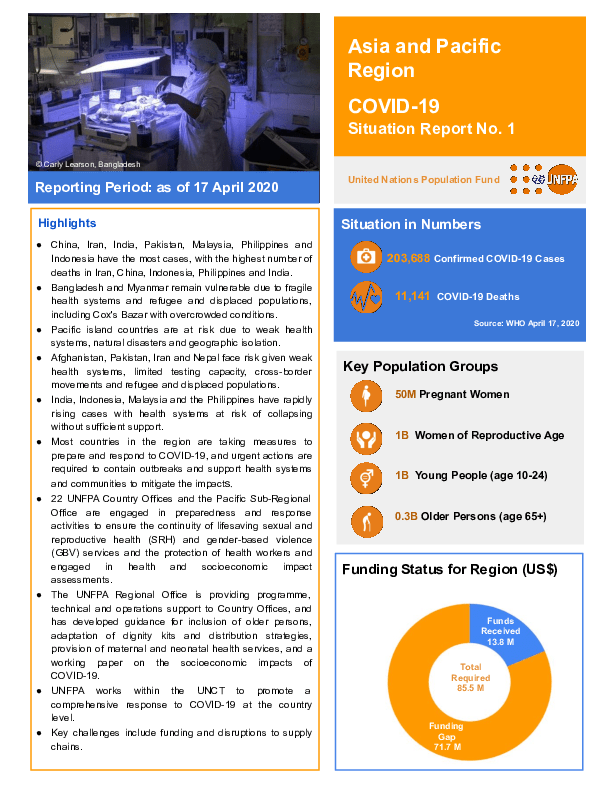
Resources
COVID-19 Situation Report No. 1 for UNFPA Asia and Pacific
Resource date: 17 April 2020
Author: UNFPA APRO
Highlights
- China, Iran, India, Pakistan, Malaysia, Philippines and Indonesia have the most cases, with the highest number of deaths in Iran, China, Indonesia, Philippines and India.
- Bangladesh and Myanmar remain vulnerable due to fragile health systems and refugee and displaced populations, including Cox's Bazar with overcrowded conditions.
- Pacific island countries are at risk due to weak health systems, natural disasters and geographic isolation.
- Afghanistan, Pakistan, Iran and Nepal face risk given weak health systems, limited testing capacity, cross-border movements and refugee and displaced populations.
- India, Indonesia, Malaysia and the Philippines have rapidly rising cases with health systems at risk of collapsing without sufficient support.
- Most countries in the region are taking measures to prepare and respond to COVID-19, and urgent actions are required to contain outbreaks and support health systems and communities to mitigate the impacts.
- 22 UNFPA Country Offices and the Pacific Sub-Regional Office are engaged in preparedness and response activities to ensure the continuity of lifesaving sexual and reproductive health (SRH) and gender-based violence (GBV) services and the protection of health workers and engaged in health and socioeconomic impact assessments.
- The UNFPA Regional Office is providing programme, technical and operations support to Country Offices, and has developed guidance for inclusion of older persons, adaptation of dignity kits and distribution strategies, provision of maternal and neonatal health services, and a working paper on the socioeconomic impacts of COVID-19.
- UNFPA works within the UNCT to promote a comprehensive response to COVID-19 at the country level.
- Key challenges include funding and disruptions to supply chains.